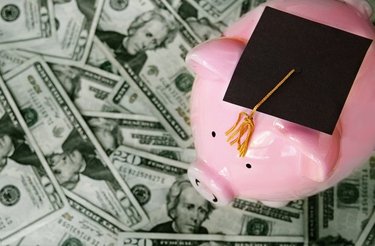
In March 2018, the US Congress passed a bill and was signed by President Trump into law called the Public Service Loan Forgiveness Program. It allocated $350 million for the Department of Education to help borrowers with previously unqualified repayment plans gain student loan forgiveness. This law is purposely to entice graduates to take qualified public service jobs that served the community and to enable forgiveness of all student loan debt for those borrowers after 120 payments over 10 years into an income-driven repayment plan. When you participate to this program portions of your debt are literally erased from your lender’s books. Student loan forgiveness programs are those backed by the federal government and cover loans issued through federal programs such as Stafford and Perkins loans.
A graduate must submit the Employment Certification for Public Service Loan Forgiveness form for every year of service, so submitting it on an annual basis will help ensure you’re on track for PSLF.
In switching to an income-driven repayment plan you may need to lower your monthly payments while extending your term to 20 or 25 years. If you stay on the standard plan, you won’t have any balance left to forgive after 10 years of payments. If you have loans from before July 1, 2014, your payment will not be higher than 15% of your discretionary income. On this plan, you will make payments for 25 years, and at that point, your loans will be forgiven. If you are a borrower with loans after July 1, 2014, your loan will not exceed 10% of your discretionary income, and the loan will be forgiven after just 20 years.
Finally, consider consolidating your student loans into a direct consolidation loan. This step is helpful if you have Perkins or FFEL loans. Plus, it simplifies your monthly payments, so you’ll only have one loan to pay each month. You can estimate your possible forgiveness through our PSLF calculator.
In availing of this program, students should not be discouraged since the eliminated amount under loan forgiveness or repayment programs may be considered taxable income in the year received. In other words, if you have $5,000 in loans forgiven next year, which may increase your taxable income in the eyes of the IRS by an equivalent amount. This may not be sound good and fun but the benefit far outweighs the cost in availing this government-funded program. There are literally hundreds of loan forgiveness programs available to graduates. Many times, professional associations within different industries will maintain a list of student loan repayment and forgiveness programs that apply to their profession.
For federal Perkins Loan cancellation and discharge program, it forgives a certain percentage of student loan debt after every year of service. Over time, you could get up to 100% of your Perkins loan canceled. This is popular among the teachers, librarian, speech-language pathologist, or another type of education professional. It also includes other eligible occupations like firefighters, law enforcement officers, nurses, public defenders, and service volunteers as well as military.
For Teachers’ Loan Forgiveness, you must work in a qualifying school for at least five consecutive years.
Loan forgiveness amounts vary depending on what subject you teach. Most elementary school teachers receive up to $5,000. Secondary school teachers who teach math, science, or special education could receive up to $17,500 in loan forgiveness. States that offer loan repayment assistance for teachers require state licensure, as well as a commitment to working for two years in a qualifying area.
For Medical, Nursing, and Mental Health Professional, the typical medical school student entering the workforce with an average of $200,000 in student debt, The Association of Medical Colleges gives repayment options and loan forgiveness for medical professionals. If you work in an underserved community, you might be eligible for the NURSE Corps Loan Repayment Program. For the first two years of employment, 60% of your student loans will get paid. If you continue for the next third year, you could qualify for forgiveness toward another 25%. The NHSC program awards up to $50,000 to licensed health care providers. You must be a primary care doctor, dentist, or a mental or behavioral clinician. In exchange for loan assistance, you must commit to working for two years at an eligible site.
For Lawyers and Legal Professionals graduates, the American Bar Association offers strategies for loan repayment and loan forgiveness on the state and federal level. If you’re a public defender, you could earn up to $10,000 per year for a maximum of $60,000.
The passage of this law remains one of the best federal student loan forgiveness programs in existence. The program allows you to wipe out your outstanding federal loans in exchange for working in a public service field, like teaching, nursing, or government positions.
